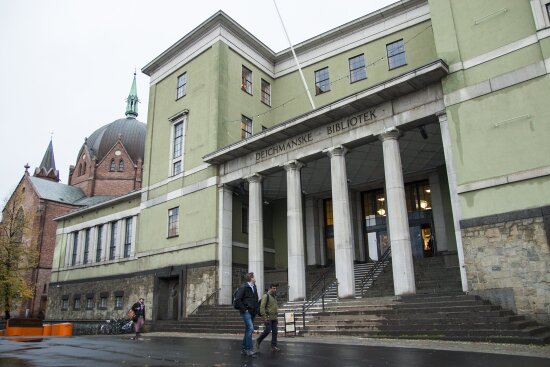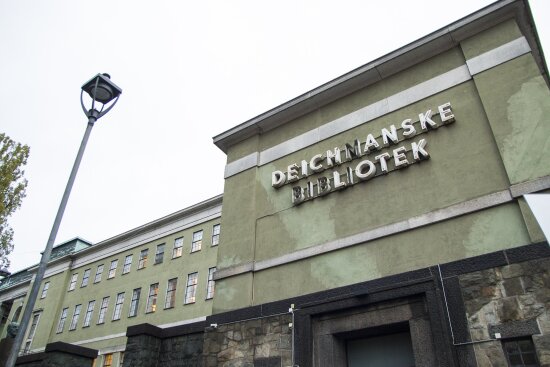This opinion piece was first published in Aftenposten on Saturday 27 October 2018, and was the first in a series of articles in the newspaper about the value and use of empty buildings.
Cranes stand by the gateway to Norway's capital city like proud giraffes. They have stood there in large herds for as long as I have lived in the city. The image is repeated across the country. New cultural centres, office buildings and shopping centres continue to appear in response to a need that no one seems to quite know where it has come from. It seems as if a national rich man’s culture has been allowed to emerge in which it is cheaper, easier and cooler to build from scratch, while we have forgotten that we are really supposed to be focusing on sustainability.
We have forgotten that we are really supposed to be focusing on sustainability.
I suspect it is a case of politicians - both at a national and municipal level – wanting to bequeth visible legacies, under the impression that this is what will encourage people to move to the areas in question as well as creating jobs. But are cultural centres, office buildings and shopping centres where the most innovative cultural forms of expression come into being, new ideas and businesses are cultivated, and alternative concepts for shopping and meeting places are created?

Photo: Eirik Evjen
At the same time as new buildings are imposed from on high, there is a movement emerging lower down in society that is focused on using what we already have. Through DOGA’s project ‘Sparkling Spaces’, we have seen empty shop premises across Norway being used to experiment with new forms of content for town centres of the future. We have seen localised theatre, office space in which business owners find each other in new ways, and new retail concepts where a lease is temporary or covers just a few centimetres of shelf space. This has enabled empty premises to be filled not only with new content but also new thoughts and desire for investment.
Another interesting phenomenon that has arisen are community houses This summer on the island of Træna, there was a group of students from New York, Umeå and Oslo who worked on new concepts for a sustainable model and development of the old youth centre. Kulturhuset – the Culture House – in Oslo is hardly a new and expensive public building. It is a meeting place in a tenement built in 1900 used throughout the day by different clubs and organisations, as well as by individuals. It functions as an urban community hall that is a café, office space, debating and concert hall at different times of day.
Common to these is that the users have been involved to a great extent in the development of the new concepts themselves. Furthermore, those responsible for revitalising buildings are at the mercy of the space, helping to create an environment in which creativity can flourish. Both the design and content are varied and innovative. The users feel at home and there is a lower threshold – including financially – for participation. This generates innovation and more attractive places.
As is the case with all reuse, it is often more environmentally friendly to reuse buildings. Although it is often argued that new buildings are more energy efficient, it takes a long time for the environmental gains to make a difference. Demolishing old buildings and producing and building new ones is bad for the environment. New builds are often situated on green spaces and can threaten biodiversity and top soil, as well as expanding towns and cities resulting in greater distances. They involve more transportation and pollution.
In Oslo there is a construction boom, and pensioned off flagship buildings like the Deichman Library, the National Gallery, the Museum of Contemporary Art and the Munch Museum will all soon be voids in the cityscape. There is nothing but speculation as to what will fill these buildings going forward. Across Norway, cultural leaders are fighting to fill cultural centres with contents they can afford while community halls fall into disuse. The municipal reform means that even more central and municipal buildings, as well as town halls, will soon lose their function and be left empty. What should we do with them? Do we understand the value that can be lost or created if we leave them to gather dust?

Photo: Jørgen Lie Furuholt / DOGA
When the public sector makes big decisions like demolishing a building or erecting a new one, socio-economic analyses are often used to work out which will provide the most value. This is to help decision makers to make the right choice based on facts and objective goals. It is very problematic that we do not discuss the values above, with the result being that they are not included. The case of the new Government Quarter in Oslo shows just how wrong it can go. In this instance, it was concluded that the preservation of the Y building is not socio-economically worthwhile, but without further analysis or justification the preservation of buildings and art is ranked as least important.
This has social, economic and environmental implications for value creation and sustainability, and is therefore a cross-party issue. The Minister of Local Government, Monica Mæland, has special responsibility for ensuring that the public sector leads by example when it comes to maintaining existing building stock. By making it easier and cheaper to test new ideas in old buildings, such as offering relief on old fashioned regulatory provisions and requirements, there is enormous potential for innovation. In those instances where the only solution is a new building, the architectural design competition should also include a component that determines what the old building should be used for. New buildings must be built to a high architectural quality and located in accordance with national guidelines. We must learn from our mistakes and build more flexible buildings that can more easily be adapted to new, future needs, and that can be disassembled in a responsible manner.
New buildings do not create innovation and culture, people do.

